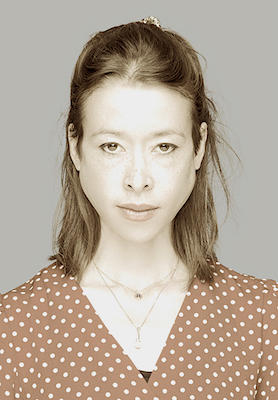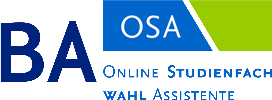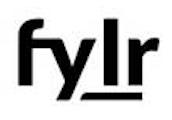Prof. Dr. Shao-Lan Hertel

Kunsthistorisches Institut
Abteilung Ostasiatische Kunstgeschichte
Professorin
Sprechstunde
Shao-Lan Hertel vertritt im Sommersemester 2021 als Gastprofessorin das Fachgebiet Ostasiatische Kunstgeschichte in der Lehre und in der Betreuung der Studierenden.
During the summer semester 2021, Shao-Lan Hertel is Substitute Chair and Visiting Professor of East Asian Art History.
Die Feriensprechstunden finden zu folgenden Terminen statt (über Webex, Anmeldung bis eine Woche vorab per e-mail):
Montag 09.08.2021, 14-17 Uhr
Montag 20.09.2021, 14-17 Uhr
s.hertel@fu-berlin.de
Vita
Shao-Lan Hertel studierte Sinologie, Chinesische Sprache und Ostasiatische Kunstgeschichte in Berlin, Paris und Peking. Ihre Forschungsschwerpunkte liegen auf den Gebieten der chinesischen Kalligrafie und Ink Art, mit historischen Foki auf den spät-kaiserzeitlichen, modernen und zeitgenössischen Perioden und einem thematischen Interesse an transkulturellen Begegnungen und Austäuschen sowie einem methodologischen Interesse an Problemfeldern der chinesischen sowie globalen Kunstgeschichtsschreibung.Von 2009 bis 2012 war sie Stipendiatin des Promotionssstudiengangs History and Cultural Studies der Dahlem Research School (DRS), Freie Universität Berlin (FUB). Im Rahmen des Promotionsstudiums erhielt sie 2010/11 eine einjährige Förderung des Deutschen Akademischen Dienstes (DAAD) und des Chinese Scholarship Council (CSC) zur Durchführung von Recherchen am Forschungszentrum für Chinesische Moderne Kalligrafie der Nationalen Kunstakademie, Hangzhou, V.R. China. Zwischen 2012 und 2018 war sie als Wissenschaftliche Mitarbeiterin des Lehrstuhls für Ostasiatische Kunstgeschichte am Kunsthistorischen Institut der FUB tätig und wurde 2017 mit einer Dissertation zum kalligrafischen Œuvre des modernen chinesischen Pinsel-und-Tusche Künstlers und Kunsttheoretikers Huang Binhong (1865–1955) promoviert. Von 2018 bis 2020 absolvierte sie ein Postdoktorandenprogramm in Kunsttheorie an der Akademie für Kunst und Design der Tsinghua Universität, Peking, V.R. China, und war zeitgleich als Postdoctoral Assistant Researcher in der Sammlungsabteilung des Tsinghua University Art Museum (TAM) tätig, wo sie Forschungen zu der Kalligrafiesammlung des Museums sowie eine Inventarisierung ihrer Werke vornahm. 2020 wurde ihr ein J. S. Lee Memorial Fellowship der Bei Shan Tang Foundation, Hong Kong, zur Umsetzung einer Sonderausstellung am TAM basierend auf ihrer dort vorangegangenen Forschung verliehen. In 2013, 2014 und 2016 war sie Mitorganisatorin des Forums Ostasiatische Kunstgeschichte an der FUB, Universität Heidelberg und Universität Bonn. Zu ihren aktuellen Publikationsprojekten gehören Buchkapitel in den Bänden Lost and Found in Translation: Citation and Early Modern Architecture (Hg. Andrew Hopkins, Cambridge University Press) und Xianxiang [Phänomene] (Hg. Han Bi, Commercial Press Shanghai) (in Vorbereitung).
Shao-Lan Hertel studied Sinology, Chinese Language, and East Asian Art History in Berlin, Paris, and Beijing. Her research fields include Chinese calligraphy and Ink Art, with historical foci on the late imperial, modern, and contemporary periods, and a thematic interest in transcultural encounters and exchanges, and a methodological in interest in issues of Chinese as well as Global Art History writing. From 2009 to 2012, she received a full scholarship for the interdisciplinary doctoral studies program History and Cultural Studies at the Dahlem Research School (DRS), Freie Universität Berlin (FUB). In the context of her doctoral studies, she was granted a one-year scholarship in 2010/11 by the German Academic Exchange Service (DAAD) and the Chinese Scholarship Council (CSC) to conduct research at the China Academy of Art Research Center for Chinese Modern Calligraphy, Hangzhou, People’s Republic of China (PRC). From 2012 to 2018, she worked as Assistant Professor of the East Asian Art History Chair at the FUB Art History Institute. She received her doctorate in East Asian Art History in 2017 with a dissertation on the calligraphic œuvre of the late-Qing/Republican-period brush-and-ink artist and theorist Huang Binhong (1865–1955). Between 2018 and 2020, she completed a postdoctoral degree program in Art Theory at the Tsinghua University Academy of Arts and Design, Beijing, PRC, and was appointed Postdoctoral Assistant Researcher at the Collections Department of Tsinghua University Art Museum (TAM), where she undertook research on and an inventory of the museum's calligraphy collection. In 2020, she was awarded as J. S. Lee Memorial Fellow of the Bei Shan Tang Foundation, Hong Kong, to realize a special exhibition at TAM based on her previous research there. In 2013, 2014, and 2016, she was co-organizer of the Forum East Asian Art History held at FUB, Heidelberg University, and the University of Bonn. Current publication projects include book chapters in the volumes Lost and Found in Translation: Citation and Early Modern Architecture (ed. Andrew Hopkins, Cambridge University Press) and Xianxiang [Phenomena] (ed. Han Bi, Commercial Press Shanghai) (forthcoming).
Stipendien und Auszeichnungen | Scholarships and Awards
2020–2021
J. S. Lee Memorial Fellow of the Bei Shan Tang Foundation, Hong Kong (postponed 2021/22)
03/2018–03/2020
Full scholarship for the undertaking of postdoctoral research project at the Tsinghua University Academy of Arts and Design, and the Tsinghua University Art Museum (TAM), granted by Tsinghua University, TAM, and the Chinese government.
11/2019:
Scholarship for participation in the International Academy of TrACE (Transnational and Transcultural Art and Culture Exchange): “Worlding the Global: The Arts in an Age of Decolonization,” Centre for Transnational Analysis (CTCA), Carleton University, Ottawa, November 7–10, 2019, granted by the Baden-Württemberg Foundation “Eliteprogramm für Postdoktoranden/-innen” (Elite Program for Postdoctoral Scholars).
09/2019:
Scholarship for participation in the Summer School “Translation and Its Theories: Theatre, Arts, Philosophy,” Center of Excellence of the Department of Human Sciences, University of L’Aquila (September 16–20, 2019), with individual research project “The Art and Art Historical Task of the Translator in the 21st Century: A Contemporary Critical Perspective on Researching Chinese Calligraphy.”
02/2017–04/2017
Postdoctoral research at the Department of Art History and Archaeology, Columbia University, New York, funded by the Ernst Reuter Foundation and the Division for Advancement of Women, FUB.
08/2016:
Scholarship for particpiation in the Smithsonian Institution “Chinese Object Study Workshop on Chinese Calligraphy,” Metropolitan Museum of Art, New York (August 29–September 2, 2016), granted by the Andrew Mellon Foundation.
07/2016–08/2016 Postdoctoral research at the School of Arts, Peking University (PKU), PRC, funded by the visiting scholar exchange program of FUB and PKU.
09/2013–10/2013
Doctoral research at the School of Arts, PKU, funded by the visiting scholar exchange program of FUB and PKU.
09/2010–08/2011
Full government scholarship as doctoral researcher at the China Academy of Art Research Center for Chinese Modern Calligraphy, Hangzhou, PRC, funded by the German Academic Exchange Service (DAAD) and the Chinese Scholarship Council (CSC).
10/2009–05/2012
Full scholarship for interdisciplinary doctoral studies program History and Cultural Studies, Dahlem Research School (DRS), FUB.
09/2005–08/2006
Full government scholarship granted by the DAAD and the CSC for studies in Chinese Language and Traditional Chinese Martial Arts at the Beijing University of Physical Education, PRC.
10/2004–04/2005 Erasmus scholarship for studies in Sinology at the Institut National des Langues et Civilizations Orientales (INALCO), Paris, France.
Mitgliedschaften | Memberships
College Art Association (CAA)
Deutsche Gesellschaft für Ostasiatische Kunst e.V. (DGOK, German Society of East Asian Art)
European Association for Chinese Studies (EACS)
International Association of Word and Image Studies (IAWIS)/Association pour L’Etude des Rapports entre Texte et Image (AIERTI)
SoSe 2021:
Vorlesung: Künste und Geschichten der chinesischen Kalligrafie: Plurale Perspektiven | Lecture: Arts and Histories of Chinese Calligraphy: Plural Perspectives
SoSe 2021:
Seminar (MA): Lesen zwischen Zeilen und Linien: Kunstgeschichtsschreibungen der chinesischen Kalligrafie | Seminar (MA): Reading Between Lines and Lineages: Art Historiographies of Chinese Calligraphy
SoSe 2021:
Projektseminar (MA): Schriftkultur und Schreibkunst in Ostasien: Magie, Mythos und Metasprache der Moderne. Projektseminar in Kooperation mit dem Museum für Asiatische Kunst zur Vorbereitung einer Themenausstellung im Humboldt Forum | Project Seminar (MA): Text Cultures and the Art of Writing in East Asia: Magic, Myth, and Meta-Language of the Modern Era. Project Seminar in Cooperation with the Museum für Asiatische Kunst in Preparation of a Thematic Exhibition at the Humboldt Forum
SoSe 2021:
BA-Einführungsmodul Ostasien (mit Tutoren): Übung mit Tutorium II | BA Introductory Module East Asia (with Tutors): Tutorial II
SoSe 2021:
Kolloquium für Masteranden und Doktoranden | Colloquium for Master and Doctoral Candidates
SoSe 2017:
Seminar (MA): Kunst aus Hong Kong im 20. und 21. Jh. (Hong Kong Art in the 20th and 21st Centuries); including the undertaking of the workshop Einführung in die Praxis der chinesischen Kalligraphie und Tusche, II (Introduction to the Practice of Chinese Calligaphy and Ink, II) in collaboration with the Berlin-based calligrapher and lecturer Andreas Schmid (22.–24.07.2017)
WiSe 2016/17:
Einführungskurs (BA): Einführung in die Kunstgeschichte Ostasiens (Survey Course [BA]: Introduction to East Asian Art History)
WiSe 2016/17:
Seminar (BA): Ink Art: Entstehung eines Genres in der VRC, Hong Kong und Taiwan, 1960er bis Gegenwart (Ink Art: Formation of a Genre in the PRC, Hong Kong & Taiwan, 1960s–Present); including the undertaking of the workshop Einführung in die Praxis der chinesischen Kalligraphie und Tusche (Introduction to the Practice of Chinese Calligaphy and Ink) in collaboration with the Berlin-based calligapher and lecturer Andreas Schmid (06.–07.01.2017)
SoSe 2016:
Seminar (BA): Schriftkunst in China im 20./21. Jh. (Calligraphy in 20th- and 21st-Century China)
WiSe 2015/16:
Einführungskurs (BA): Einführung in die Kunstgeschichte Ostasiens (Survey Course [BA]: Introduction to East Asian Art History)
WiSe 2014/15:
Einführungskurs (BA): Einführung in die Kunstgeschichte Ostasiens (Survey Course [BA]: Introduction to East Asian Art History)
WiSe 2013/14:
Seminar (BA) Umbruch des Kanons: Kulturen und Praktiken der Kalligrafie in China in der späten Ming- und frühen Qing-Zeit (Cultures and Practices of Calligraphy in Late-Ming/Early-Qing China), including students’ preparation of special exhibition „Tanz des Pinsels. Chinesische Schriftkunst“ (Dance of the Brush. The Chinese Art of Writing) (March 25–September 14, 2014), Museum für Asiatische Kunst Berlin (Asian Art Museum Berlin)
WiSe 2013/14:
Einführungskurs (BA): Einführung in die Kunstgeschichte Ostasiens (Survey Course [BA]: Introduction to East Asian Art History)
SoSe 2013:
Einführungskurs (BA): Einführung in die Kunstgeschichte Ostasiens (Survey Course [BA]: Introduction to East Asian Art History)
WiSe 2012/13:
Seminar (BA) Der Körper des Schriftzeichens: technische Grundlagen, stilistische Ausprägungen und ästhetische Begriffe der vormodernen Schreibkunst Chinas (The Body of Written Characters: Technical Foundations, Stylistic Manifestations, and Aesthetic Concepts of Calligraphy in Premodern China)
Forschungschwerpunkte | Fields of Research
Shao-Lan Hertels Forschungsschwerpunkte liegen auf den Gebieten der chinesischen Kalligrafie und Ink Art, mit historischen Foki auf den spät-kaiserzeitlichen, modernen und zeitgenössischen Perioden und einem thematischen Interesse an transkulturellen Begegnungen und Austäuschen und einem methodologischen Interesse an Problemfeldern der chinesischen sowie globalen Kunstgeschichtsschreibung.
Shao-Lan Hertel’s fields of research include Chinese calligraphy and ink art, with historical foci on the late imperial, modern, and contemporary periods, and a thematic interest in transcultural encounters and exchanges as well as a methodological interest in issues of both Chinese and Global Art History writing.
Publikationen (Auswahl) | Publications (Selection)
Monografien | Monographs
“Between Zheng Fu (1622–1693) and Zhang Ding (1917–2010): Three Hundred Years of Metal- And-Stone–––Seal- and Clerical-Script Calligraphy in the Collection of Tsinghua University Art Museum (TAM) | Zheng Fu (1622–1693) dao Zhang Ding (1917–2010) zhijian: Sanbai nian de jinshi qi–––Qinghua Daxue Yishu Bowuguan shoucang de zhuanli shufa.” Postdoctoral diss. Tsinghua University, 2020; Tsinghua University Library.
“The Inner Workings of Brush-and-Ink: A Study on Huang Binhong (1865–1955) as Calligrapher, with Special Respect to the Concept of Interior Beauty (neimei).” Diss. Freie Universität Berlin, 2017, https://refubium.fu-berlin.de/handle/fub188/1580.
Herausgeberschaften | Edited Books
(mit/with Annegret Bergmann, Antje Papist-Matsuo, Juliane Noth and Wibke Schrape): Elegante Zusammenkunft im Gelehrtengarten: Studien zur Ostasiatischen Kunst zu Ehren von Jeong-hee Lee-Kalisch/Elegant Gathering in a Scholar’s Garden: Studies in East Asian Art in Honor of Jeong-hee Lee-Kalisch. Weimar: VDG, 2015.
Beiträge in Bänden | Contributions in Edited Volumes
“Reconstructing Early Modern Architectural Spaces in Late-Ming (1368–1644) and Early-Qing (1644–1912) China: Formats and Functions of Large-Scale Calligraphy,” in Andrew Hopkins (ed.): Lost and Found in Translation: Citation and Early Modern Architecture. Cambridge: Cambridge University Press (forthcoming).
“Zhuixun ’xiantiao de neimei’——Huang Binhong (1865–1955), Lin Sanzhi (1898–1989) yu Wang Dongling zhijian de shicheng lujing yiji caoshu yishu de meixue yiyi“ [In Search of ‘The Interior Beauty of the Brushline’: Routes of Transmission Between Huang Binhong (1865–1955), Lin Sanzhi (1898–1989), and Wang Dongling (1945–), and the Significance of Cursive-Script Calligraphy Aesthetics], in Han Bi (ed.): Xianxiang [Phenomena]. Shanghai: Shangwu Yinshuguan/The Commercial Press (forthcoming).
“Xiao zhong shen yi Shuangdun taosu rentouxiang biaoqing de tuxiangzhi jiedu ji qi yishu wenhua shi neihan“ [What’s in a Smile? Reading the Iconography of a Facial Gesture Through the Shuangdun Pottery Head Portrait and Its Art- and Culture-Historical Implications], in Zhongguo Kexue Yuan (Chinese Academy of Sciences, CAS, ed.): Huanghe liuyu gudai wenming yanjiu——Bengbu Shuangdun taosu rentouxiang yu shiqian diaosu xueshu yantaohui wenji [Essay Collection of the Huai River Valley Ancient Civilizations Studies Academic Conference on Prehistoric Sculpture and the Pottery Head Portrait of the Bengbu Shuangdun Site]. Beijing: Kexue Chubanshe/Sciences Press (forthcoming).
“Moulding the Script-Body: Calligraphy and Commemoration in Huang Binhong’s (1865–1955) Late Works,” in: Jeong-hee Lee-Kalisch and Wibke Schrape (ed.): Moving Signs and Shifting Discourses: Text and Image Relations in East Asian Art. Studies of East Asian Art History vol. 6/Studien zur Ostasiatischen Kunstgeschichte Bd. 6. Weimar: VDG, Verlagsgruppe arts + science weimar (forthcoming).
“Cong kua wenhua duihua kuang du ‘Zhongguo dangdai shufa‘: Wang Dongling yu Mading Weimo’er de hezuo zuopin ‘Shijue duihua‘ (2010)“ [Reading “Chinese Contemporary Calligraphy“ through a Cross-Cultural Speech Bubble: Wang Dongling and Martin Wehmer’s Collaborative Work Visual Dialogue (2010)] (English transl. by Yuri Kuzmin), in: Wang Dongling and Xu Jiang (ed.): 2019 ‘Shu feishu Hangzhou guoji xiandai shufa yishu jie. Juan er: lunwen [2019 ‘Writing/Non-Writing‘ Hangzhou International Modern Calligraphy Festival. Vol. II: Essays]. Hangzhou: China Academy of Art Press, 2020, pp. 144–156.
“Whither the Methods of the Ancients? Huang Binhong’s (1865–1955) Clerical-Scripted Painting as a Response to the ‚Harmonious Uniting of Red-and-Green and Ink‘”, in: Annegret Bergmann/Jeong-hee Lee-Kalisch (eds.): Transcultural Intertwinements in East Asian Art and Culture, 1920s-1950s. Studies of East Asian Art History vol. 5/Studien zur Ostasiatischen Kunstgeschichte Bd. 5. Weimar: VDG, arts+science Weimar, 2018, pp. 101–127.
“Re-Membering the Peach Blossom Stream: Image, Word, and Commemoration in Late Works by Huang Binhong (1865–1955),” in: Li Song and Ding Ning (ed.): 2013–2015 nian Beijing Daxue meishu shi boshisheng luntan lunwen xuanji––Selected Papers from the International Graduate Symposium of Art History, Peking University, 2013–2015. Guilin: Guangxi Normal University Press, 2016, pp. 55–82.
“Concept of Transformation or Transformation of Concept? Investigating a Calligraphic Lineage in Twentieth-Century China,” in: Jeong-hee Lee-Kalisch/Almut-Barbara Renger (eds.): Meister und Schüler. Master and Disciple: Tradition, Transfer, Transformation. Studies in East Asian Art History vol. 3/Studien zur Ostasiatischen Kunstgeschichte Bd. 3. Weimar: VDG, 2016, pp. 339–356.
“Lücken und Kontingenzen der Kunstgeschichte: Detail einer ming-zeitlichen Abreibung der Steintrommelinschriften” [Gaps and Contingencies of Art History: Detail of a Ming-Dynasty Rubbing of the Stone Drum Inscriptions], in: Annegret Bergmann/Shao-Lan Hertel/Juliane Noth/Antje Papist-Matsuo/Wibke Schrape (eds.): Elegante Zusammenkunft im Gelehrtengarten: Studien zur Ostasiatischen Kunst zu Ehren von Jeong-hee Lee-Kalisch – Elegant Gathering in a Scholar’s Garden: Studies in East Asian Art in Honor of Jeong-hee Lee-Kalisch. Weimar: VDG, 2015, pp. 88–95.
“Copy and Culmination: Attempting to Assess the Significance of Huang Binhong’s (1865–1955) Calligraphy in the Context of His ‘Late Bloom’”, in: Kong Lingwei and Juliane Noth (ed.): Huang Binhong yu xiandai yishu sixiang guoji xueshu yantaohui wenji––Huang Binhong and the Evolution of Modern Ideas in Art: An International Forum. Hangzhou: China Academy of Art Press, 2014, pp. 40–63.
Zeitschriftenaufsätze | Journal Articles
“Deterritorializing Chinese Calligraphy: Wang Dongling and Martin Wehmer’s ‘Visual Dialogue’ (2010),” The Journal of Transcultural Studies 11, no. 2 (Winter 2020), theme issue “How We Work Together: Ethics, Histories, and Epistemologies of Artistic Collaboration” (Guest Ed. Franziska Koch): pp. 113–149. https://doi.org/10.17885/heiup.jts.2020.2.24284
“Creating Academic-Museal Dialogue In-Between Ivory Towers and Unwritten Pages: Tsinghua University Art Museum and Its Collection of Chinese Contemporary Calligraphy,” Cahiers d'Histoire, vol. XXXVII, no. 2 (Winter 2020), Special Issue Génération: Histoires nouvelles en Chine et en Asie de l’Est [Generation: New Histories in China and East Asia] (Guest Editor: Carl Déry), pp. 93–137. https://doi.org/10.7202/1073067ar
“Of Kowloon’s Uncrowned Kings and True Recluses: Commemoration, Trace, and Erasure, and the Shaping of a Hong-Kong-topia from Chen Botao (1855–1930) to Tsang Tsou-choi (1921–2007),” Art Research, vol. 1 (February 2020), Special Issue Landscapes in Art, Theory, and Practice across Media, Time, and Place, Art Research Center, Ritsumeikan University, pp 24–35. https://www.arc.ritsumei.ac.jp/download/AR_SPECIALISSUE_vol.1_4_HERTEL.pdf
“Tasting Antiquity in a ‘Newborn Palace of Art’: Collecting and Displaying Chinese Calligraphy at Tsinghua University Art Museum,” Yishu: Journal of Contemporary Chinese Art, vol. 18, no. 4 (July/August 2019), pp. 23–44. https://yishu-online.com/browse-articles/?1000
“Texturing the Landscape: Stone-Engraving Traditions in China as Human Refinement, A Contemporary Position,” Ritsumeikan Studies in Language and Culture, International Institute of Language and Culture Studies, Ritsumeikan University, vol. 28, no. 4, March 2017, pp. 21–31. http://www.ritsumei.ac.jp/acd/re/k-rsc/lcs/kiyou/pdf_28-4/lcs_28_4_hertel.pdf
“Lines in Translation: Cross-Cultural Encounters in Modernist Calligraphy, Early 1980s–Early 1990s”, Yishu: Journal of Contemporary Chinese Art, vol. 15, no. 4 (July/August 2016), pp. 6–28. https://yishu-online.com/browse-articles/?845
“Fluktuative Signifikate: Wie die Materialität der chinesischen Kalligraphie ihre Lesung bestimmt”, Variations. Literaturzeitschrift der Universität Zürich, Nr. 17 Sprache als Material. Bern: Peter Lang, 2009, pp. 113–125. https://www.variations.uzh.ch/de/archive/varia17.html
Einträge in Ausstellungskatalogen und Lexika | Entries in Exhibition Catalogues and Lexica
“Wang Dongling (*1945),” in: Andreas Beyer/Bénédicte Savoy/Wolf Tegethoff (eds.): Allgemeines Künstlerlexikon (AKL): Die Bildenden Künstler aller Zeiten und Völker. Berlin: Walter de Gruyter (forthcoming).
“Portrait of Wang Menglou Playing Qin” (cat. 35); “Portrait of Wang Yuyan Drawing Orchids” (cat. 36); “Portrait of Tang Jinzhao in Leisure Activity” (cat. 44); “Portrait of Tao Guan Appreciating an Inkstone” (cat. 46); “Portrait of Married Couple Reading in a Studio” (cat. 61), in: Klaas Ruitenbeek (ed.): Faces of China: Portrait Painting of the Ming and Qing Dynasties (1368–1912). Exhibition catalogue published in conjunction with the special exhibition of the Asian Art Museum, National Museums in Berlin (October 12, 2017–January 07, 2018). Petersberg: Michael Imhof, 2017.
“Lin Sanzhi (1898–1989),” in: Andreas Beyer/Bénédicte Savoy/Wolf Tegethoff (eds.): Allgemeines Künstlerlexikon (AKL): Die Bildenden Künstler aller Zeiten und Völker, vol. 84. Berlin: Walter de Gruyter, 2015, p. 471.
Übersetzungen (chin.-engl.; chin.-dt.) | Translations (Chinese-English; Chinese-German)
Peng Lai: “Jinghua——Thilo Westermann zuopin zhong de yi shikong wenhua huzhao“ [Mirror Flowers: Cross-Cultural Reflections of Diverse Concepts of Time and Space in Thilo Westermann‘s Œuvre], in Westermann, Thilo: Migrations (forthcoming).
Zheng Hong: “Xifang dangdai yishu zhong de Zhongguo yuansu: yi Thilo Westermann zuopin weili” [Chinese Elements in Western Contemporary Art: Thilo Westermann’s Works as an Example], in Westermann, Thilo: Migrations (forthcoming).
Translation of the Chinese-language texts in the catalogue published on occasion of the special exhibition “Everlasting Like The Heavens: The Cultures and Arts of the Zhou, Qin, Han, and Tang,” Tsinghua University Art Museum (exhibition period: September 10–December 17, 2019). Shanghai: Shanghai Shuhua Chubanshe, 2019.
Translation of the Chinese-language texts in the catalogue published on occasion of the special exhibition “Utensils and Ornaments Endlessly Fine: National Treasures from Afghanistan at the Cultural Crossroads of East and West,” Tsinghua University Art Museum (exhibition period: April 18–June 23, 2019). Shanghai: Shanghai Shuhua Chubanshe, 2019.
Translation of the Chinese-language texts in the catalogue published on occasion of the special exhibition “Fuso Reflection: Exhibition of Japanese-Style Bronze Mirrors Donated by Wang Ganghuai,“ Tsinghua University Art Museum (exhibition period: April 21, 2019–April 19, 2020). Beijing: Tsinghua University Art Museum, 2019.
Translation of the Chinese-language texts in the catalogue published on occasion of the special exhibition “Autumn Charm of Miu Pusun: Exhibition of One Hundred Chrysanthemum Paintings,“ Tsinghua University Art Museum (exhibition period: August 25, 2018–March 17, 2019). Beijing: Tsinghua University Art Museum, 2018.
Translation of the Chinese-language texts in the catalogue published on occasion of the temporary exhibition “Yingshi’s Collection Highlights: Exhibition of Works Donated by Mr Gao Yingshi,” Tsinghua University Art Museum (exhibition period: October 30, 2018–November 30, 2018). Beijing: Tsinghua University Art Museum, 2018.
Jingren Lü: “Zum gegenwärtigen Buchdesign in China,” in: Jumping He/hesign International GmbH (ed.): Schriftbilder – Bilderschrift: Chinesisches Plakat- und Buchdesign heute. Berlin: hesign, 2016, pp. 15–17.




